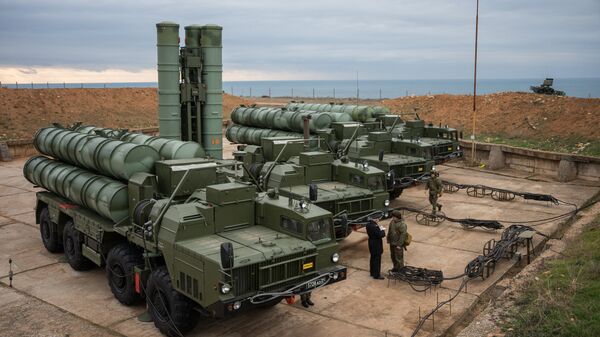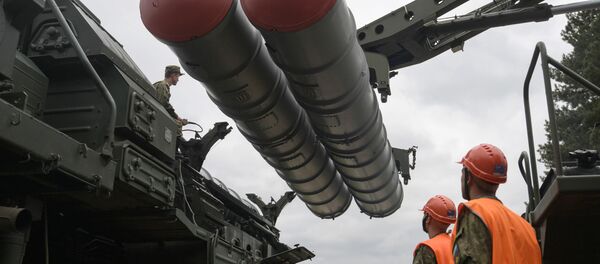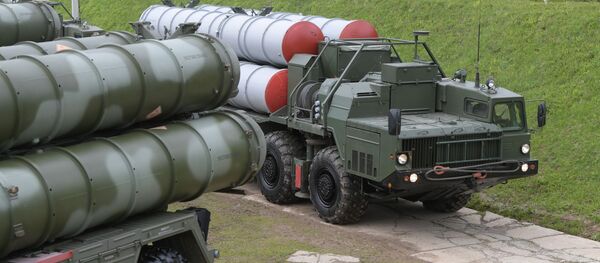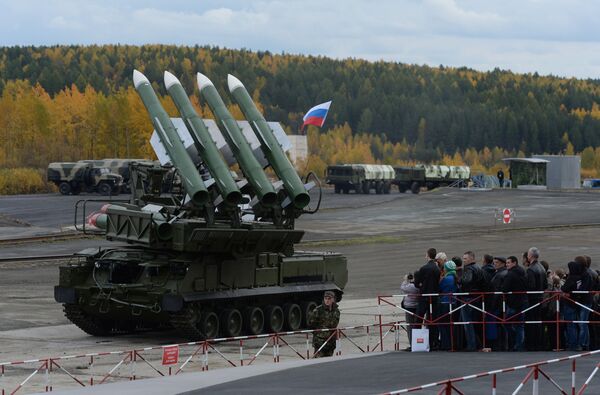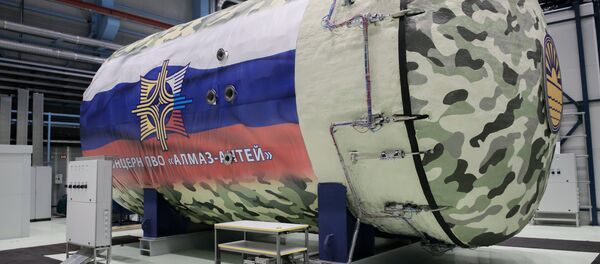Russia's powerful air defense network has always been its competitive advantage, Sputnik contributor Andrei Kots writes, commenting on the recent military drills by the country's armed forces in the Astrakhan region. The regiment, armed with air defense missile systems (ADMS) S-300PMU-2 "Favorit," repelled a massive raid of aviation and cruise missiles by a hypothetical aggressor.
"During the firing practice the efficiency of training of a combat crew is checked," Reserve Colonel Mikhail Khodaryonok, who has served many years in the air defense forces, told Sputnik. "At this stage it's easy to 'get a bad mark' — to miss the target, or to fire at it with incomplete use of firepower, or to contravene combat instructions. Everything is recorded, including voice information, orders and combat units' actions. The command sets complex goals for anti-aircraft gunners, imitates electronic jamming and so on. This is done so that they don't lose courage in a real battle."
The second stage is combat shooting. Targets are launched from the ground, radars detect, intercept and track them, providing battalions with all necessary data to destroy them. The cost of a mistake is high, as the targets are being struck with real missiles.
The journalist highlighted that a miss could become fatal for the whole military unit if the adversary manages to destroy an important command post. He pointed out that Russia has always taken into consideration the numerical superiority of NATO forces in tactical aviation while developing its cutting-edge air defense systems.
For instance, while creating the S-300 and S-400 Triumf anti-aircraft weapon systems, Russian designers focused on the number of simultaneously tracked targets, as well as on the capability of effectively destroying low-flying and low-profile objects.
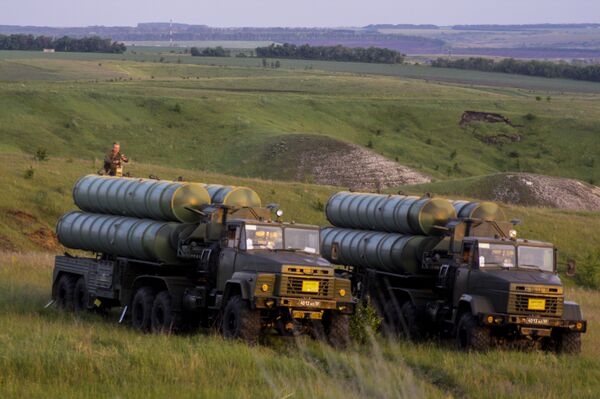
The Russian Hmeymim airbase in Syria is a vivid example of a complex air defense network in miniature, the Sputnik contributor pointed out. The forward echelon is presented by the S-400 complex, the second one is the S-300F Fort systems, a naval version of the S-300P, which are mounted on the Moskva and Varyag guided missile cruisers; they are supported by Syrian medium-range advanced defense missile complexes (ADMC) Buk-M2E.
The third echelon is formed by Syrian surface-to-air missile systems Pechora-2M. And finally, the fourth echelon is anti-aircraft missile systems Pantsir-S1, which protect the airfield and S-400 positions. Additionally, Su-30SM and Su-35 jet fighters are patrolling the skies, ready to repel any attack. Kots highlighted that the aforementioned systems are functioning elements of a single network.
The journalist pointed out that the S-400 Triumf still remains the most advanced anti-aircraft missile system capable of destroying all types of aerodynamic targets — aircraft, helicopters, unmanned aerial vehicles (UAVs), cruise missiles at ranges up to 400 kilometers (248.5 mi) and at altitudes of up to 30 kilometers (18.6 mi).
"Over time, this very system [S-500] will become the backbone of the Russian long-range air defense," the journalist emphasized. "Most of its tactical and technical characteristics are kept secret, but it was previously reported that the S-500 could detect and simultaneously hit up to ten ballistic supersonic targets flying at a speed of 7 kilometers per second. The range of the new weapon is 500 kilometers."
The views and opinions expressed here are those of the speakers and do not necessarily reflect those of Sputnik.

